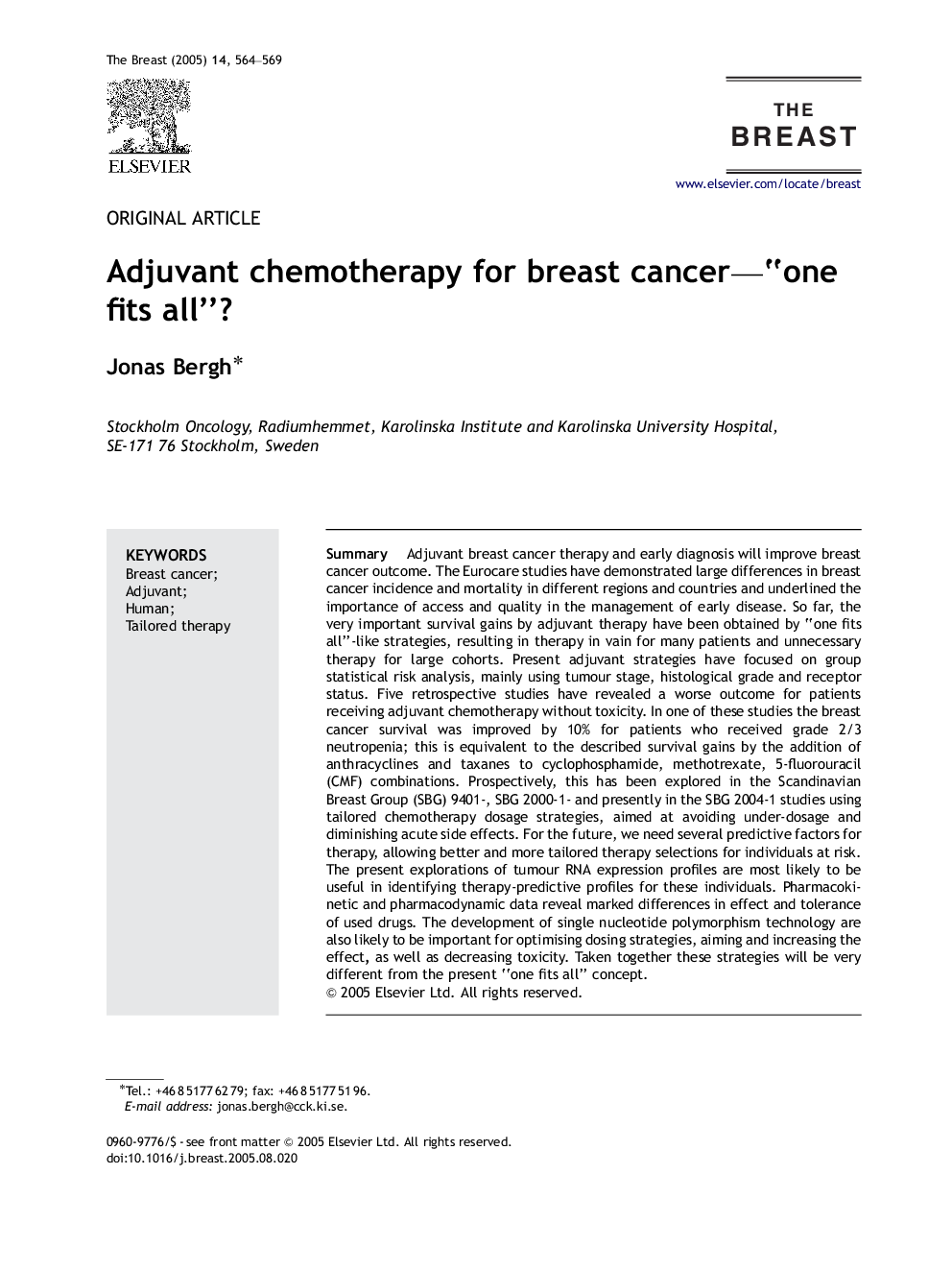| Article ID | Journal | Published Year | Pages | File Type |
|---|---|---|---|---|
| 9316152 | The Breast | 2005 | 6 Pages |
Abstract
Adjuvant breast cancer therapy and early diagnosis will improve breast cancer outcome. The Eurocare studies have demonstrated large differences in breast cancer incidence and mortality in different regions and countries and underlined the importance of access and quality in the management of early disease. So far, the very important survival gains by adjuvant therapy have been obtained by “one fits all”-like strategies, resulting in therapy in vain for many patients and unnecessary therapy for large cohorts. Present adjuvant strategies have focused on group statistical risk analysis, mainly using tumour stage, histological grade and receptor status. Five retrospective studies have revealed a worse outcome for patients receiving adjuvant chemotherapy without toxicity. In one of these studies the breast cancer survival was improved by 10% for patients who received grade 2/3 neutropenia; this is equivalent to the described survival gains by the addition of anthracyclines and taxanes to cyclophosphamide, methotrexate, 5-fluorouracil (CMF) combinations. Prospectively, this has been explored in the Scandinavian Breast Group (SBG) 9401-, SBG 2000-1- and presently in the SBG 2004-1 studies using tailored chemotherapy dosage strategies, aimed at avoiding under-dosage and diminishing acute side effects. For the future, we need several predictive factors for therapy, allowing better and more tailored therapy selections for individuals at risk. The present explorations of tumour RNA expression profiles are most likely to be useful in identifying therapy-predictive profiles for these individuals. Pharmacokinetic and pharmacodynamic data reveal marked differences in effect and tolerance of used drugs. The development of single nucleotide polymorphism technology are also likely to be important for optimising dosing strategies, aiming and increasing the effect, as well as decreasing toxicity. Taken together these strategies will be very different from the present “one fits all” concept.
Related Topics
Health Sciences
Medicine and Dentistry
Obstetrics, Gynecology and Women's Health
Authors
Jonas Bergh,
